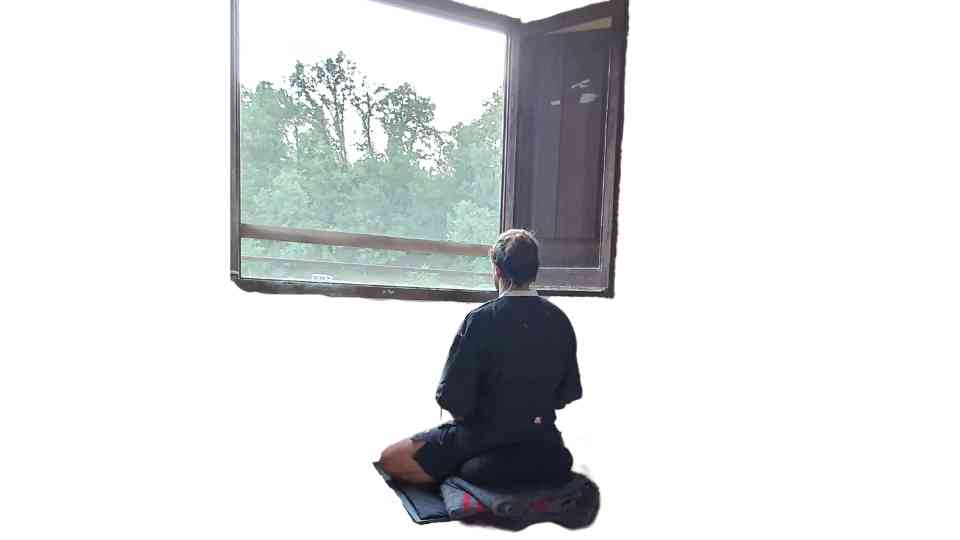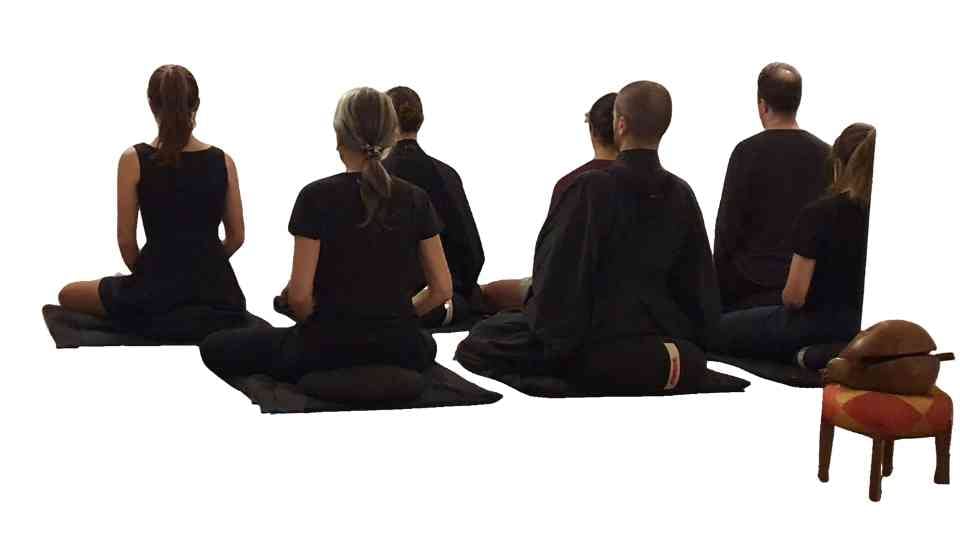Concentration and observation are like the right leg and the left leg with which the mind walks during zazen. A path that overcomes the obstacles of drowsiness and agitation (Kontin and Sanran), avoiding stagnation and confusion. In this article, we will explore this crucial concept in the Zen teachings of Taisen Deshimaru and provide guidelines for practicing it.
Practicing Concentration and Observation
Once we have settled into the zazen posture and are breathing calmly, this alone is not enough. The mind, especially in beginners, does not immediately enter a state of calm. At first, many thoughts arise, as if we had left a window open in our brain, allowing a strong gust of wind to rush in.
With time and practice, these thoughts gradually fade until the mind reaches a state of serenity. Serenity opens the door to concentration, known in Sanskrit as samadhi.
Samadhi: the Self-Sustaining Serene Concentration
We say that samadhi is a self-sustaining serene concentration. But what does self-sustaining mean? It means that the dynamics of the body and mind during zazen reinforce and nourish concentration.
This feedback effect is similar to what occurs with Flow (Csikszentmihalyi, M., 1997). However, in the case of zazen’s samadhi, the effect is much more powerful and activates a more equanimous awareness (Nansen, 2022).

Concentration Without Drowsiness
Concentration alone is not enough for zazen. If we remain solely in a state of concentration, we lose perception of our surroundings, which can lead to a state of drowsiness, known as kontin (in Japanese).
This highlights the importance of observation, which prevents this drowsiness and keeps awareness awake. When concentration and observation are correctly combined, hishiryo arises—the thought beyond thought—which is the essence of zazen (Deshimaru, 1978).
In the first minutes of zazen, concentration and observation alternate. Concentration alone can lead to kontin, or drowsiness, while exclusive and prolonged observation can result in a state of agitation, known as sanran (in Japanese). The key is to find a balance between concentration and observation.
Concentration on the Line Between the Nose and the Navel
In The Practice of Concentration, published in Paris in 1978, Taisen Deshimaru recommends this concentration technique: focusing the mind on an imaginary vertical line connecting the nose and the navel, ensuring correct posture and maintaining bodily alignment.
Connecting the Breath to the Nose and Navel
This technique is further enhanced by placing attention on the breath at the entrance of the nose and the hara (below the navel). When inhaling, we focus on the sensation of the air entering and the rise of the abdomen in the hara. When exhaling, we focus on the descent of the abdomen in the hara and the sensation of the air leaving through the nose. We direct the mind along the imaginary line connecting these two points.

Observation of Impermanence
Regarding observation, it is about remaining available and vigilant to see how things appear, grow, decline, and disappear. Whether sensations, emotions, thoughts, or anything else, we observe their arising and cessation.
Observation of Interdependence
At the same time, we realize that things do not appear out of nowhere. A thought leads to another thought, a sensation leads to an emotion, and everything arises in relation to something prior. Likewise, when things disappear, they do so in connection with others.
Observation of Obfuscation
If we cannot clearly see the impermanence and interdependence of what has arisen in our consciousness, it is because obfuscation is present (bonnō in Japanese, kleśa in Sanskrit). Essentially, obfuscations are greed, aversion, and attachment to the self. We observe the presence of obfuscation.
Mindfulness Meditation
The harmonious alternation of concentration and observation facilitates the dynamic of observing and accepting everything that appears in our mind, becoming aware of it, and letting it go immediately to return to concentration on the body and breath. This is the best way to learn to meditate.
From here, there is a long journey ahead, but I propose starting with a very simple yet powerful first exercise. We sit in the zazen posture and practice concentration on the vertical line connecting the nose and the navel while observing impermanence—the arising and disappearance of things. Later, we can add more complexity, but let’s practice this for a good period of time.

References
DESHIMARU, T., 1978. La Pratique de la concentration: Zen et vie quotidienne. Editions Zen-Retz Paris
DESHIMARU, T., 1999. La Práctica de la concentración. Barcelona: Edicomunicación. ISBN 8476729006.
Other articles on meditation
Learn to Meditate on My Own
More and more people are asking how to learn to meditate on their own because…
What is Meditation?
What is Meditation? Today there is a vast array of meditation offerings—there are guided meditation…
Satipatthana: The Four Foundations of Mindfulness
Satipatthana: Sati – Attention, Patthana – The Four Foundations of Mindfulness The Four Foundations of…
Obstacles in Zazen: Kontin and Sanran
In the practice of zazen, the seated meditation in Zen Buddhism, there are two main…
Zen Meditation and pain tolerance
Effects of Meditation on Pain Tolerance Meditation and pain have a very special relationship for…
Meditate more and consume less.
In a small village by the sea, there lived a man named Joan. He was…







